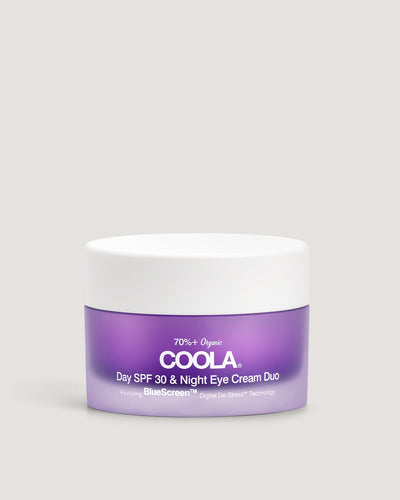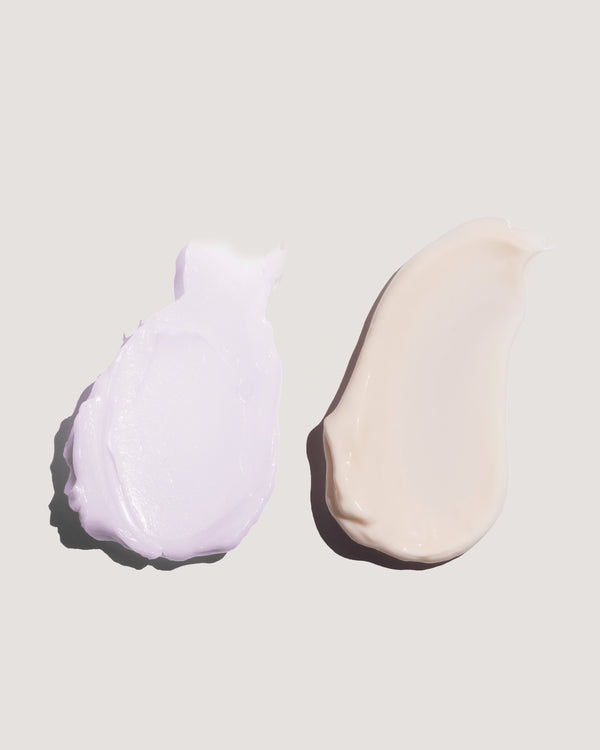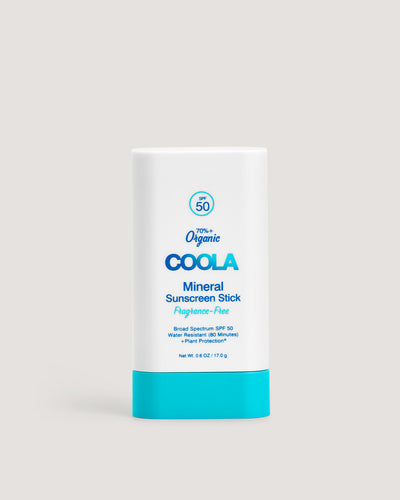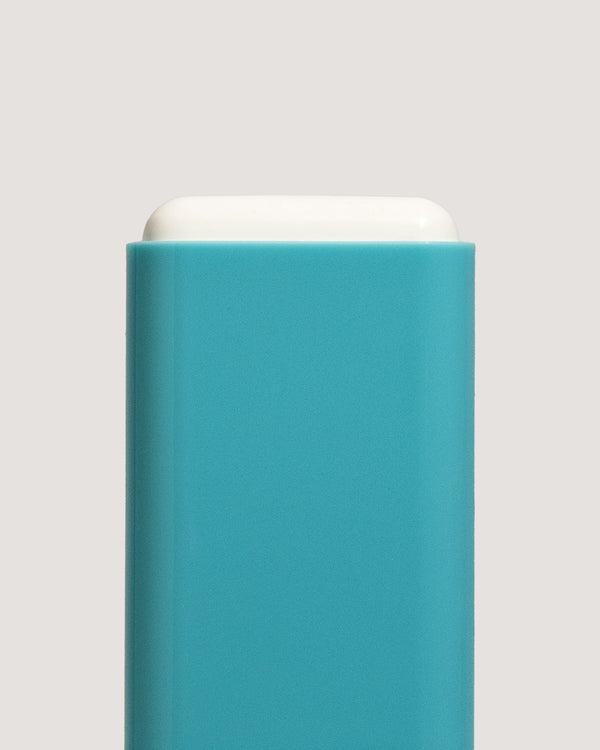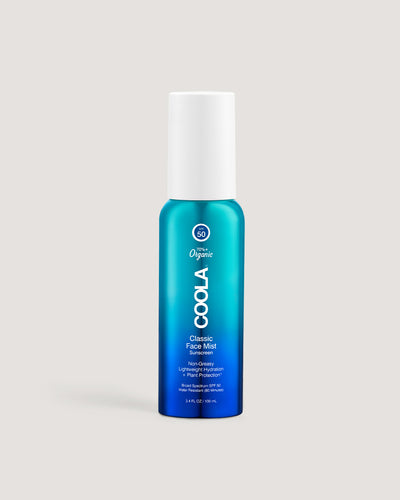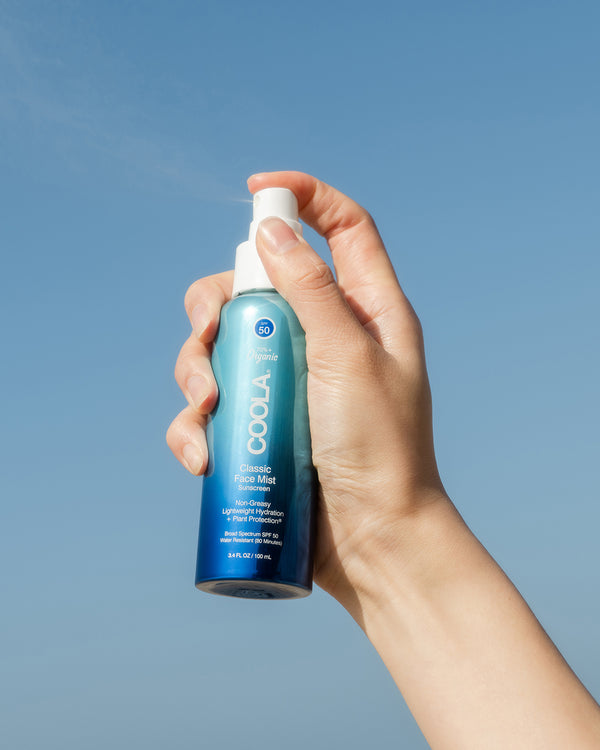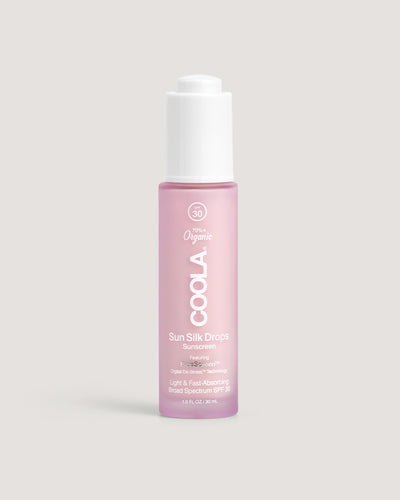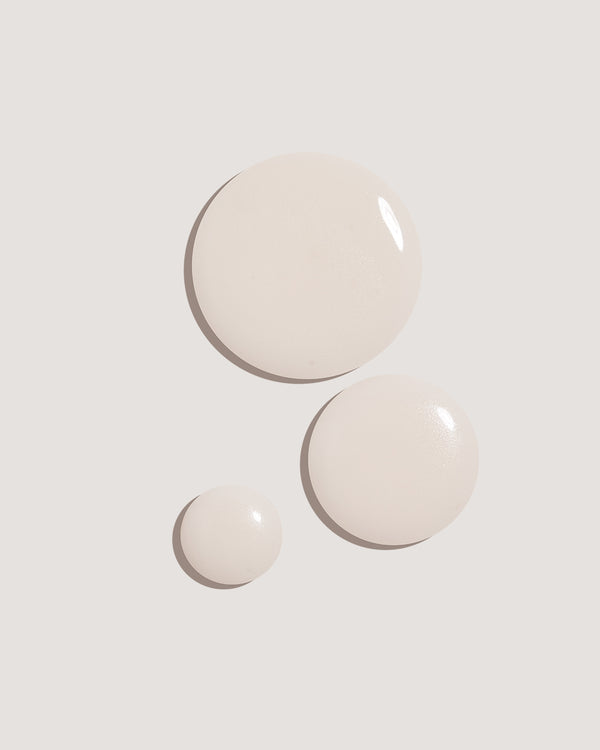
Sunscreen for Eyelids: Why It Matters and How to Apply It
It’s easy to skip sunscreen around your eyes—most of us have learned the hard way that getting SPF too close can sting. But here’s the catch: your eyelids are some of the most delicate skin on your face, and they’re especially vulnerable to sun damage.
Despite the risks, the eye area is one of the most commonly missed spots in daily SPF routines. In fact, according to the Skin Cancer Foundation, the skin around the eyes is not only thin and sensitive—it’s also a common site for skin cancers, especially on the lower eyelid.1
The good news? There are SPFs designed to protect this sensitive area without the sting. Here’s how to apply sunscreen around your eyes and what to look for when choosing the right formula.
Can You Burn Your Eyelids?
Yes! Your eyelids can burn just like any other exposed skin. And because the skin here is especially thin and delicate, a sunburn can be painful and more difficult to treat. Applying after-sun products around the eyes isn’t always practical, which makes prevention essential.
More than just sunburn, UV exposure around the eyes contributes to cumulative damage over time, including fine lines, pigmentation, and an elevated risk of skin cancer. Research shows that eyelid skin is particularly vulnerable to UV-related aging and carcinogenesis.2
Eyelid cancers can also be harder to detect and diagnose early, making consistent sun protection even more important.
Why Most Sunscreens Don’t Work Well Around the Eyes
If you’ve ever had sunscreen sting your eyes, you’re not alone. The skin around the eyes is thinner and more sensitive, so even well-formulated sunscreens can sometimes cause discomfort.
Chemical sunscreens protect by absorbing UV rays, while mineral sunscreens act as a physical barrier. Both can be effective, but certain formulas may be better tolerated depending on your skin type and sensitivity. Sweating, rubbing, or product migration can also increase the chance of irritation, regardless of the base.
That’s why it helps to use a sunscreen designed for delicate skin, with a balance of strong UV protection and gentle ingredients. The Day SPF 30 & Night Eye Cream Duo offers this combination, making it a comfortable choice for everyday wear around the eyes.
What Kind of Sunscreen Is Safe for Eyelids?
When choosing sunscreen for the delicate eye area, gentle, effective protection is key. Look for these features when selecting a sunscreen for eyelids.
Choose Sunscreens That Work for Sensitive Eyes
The skin around your eyes is thinner and more delicate, so not every sunscreen feels comfortable there. Look for formulas designed to be lightweight and gentle — whether that’s a sheer mineral sunscreen or a well-formulated chemical option made for sensitive skin.
Use SPF 30 or Higher
The best sunscreen for eyelids should always have a minimum rating of SPF 30. For effective eye sunscreen, SPF 50 is a good choice if you’re likely to be exposed to sunshine for longer.
Best Sunscreen Options for Around Your Eyes
Eye creams with SPF are perfect for your delicate under-eye area. However, these creams aren’t your only option.
You can also use mineral sunscreen stick. It won’t drip into your eyes, and the shape makes it easy to apply with precision.
Refresh your protection with a water-resistant sunscreen mist for the face. Just be sure to keep your eyes closed while spraying.
Or, you can opt for sunscreen drops that multitask, protecting you from UV rays while mitigating the effects of potentially harmful blue light.
How to Apply Sunscreen on Your Eyelids (Without Getting it in Your Eyes)
Follow these simple steps to apply sunscreen on your eyelids:
- Wash your hands thoroughly before application
- Use clean fingertips to gently dab sunscreen onto your eyelids—don’t rub
- Consider using a stick sunscreen or a similar format for more control and less contact
- Apply above the lash line only, avoiding the inner corners of your eyes
- Let the sunscreen absorb fully before applying any makeup
- Reapply every two hours when exposed to sunlight
- At the end of the day, gently wash your face, remembering to remove sunscreen from your eyelids
These steps help ensure your delicate eye area is protected without irritation or product migration.
What to Do If Sunscreen Gets in Your Eye
Sunscreen in the eyes can sting! But it’s not the end of the world if you know how to get sunscreen out of your eyes:
- Rinse the eye area gently with clean, lukewarm water
- Getting in the shower can make it easier to flush everything out
- Avoid rubbing your eye, even if it itches or burns
- Skip home remedies like milk or oils—they can cause more irritation
- If discomfort persists or gets worse, seek medical attention
Most stinging is caused by chemical formulas, so switching to a mineral sunscreen can help prevent future discomfort.
FAQs About Sunscreen and the Eye Area
Can I use regular face sunscreen on my eyelids?
Yes, but consider choosing a sheer mineral formula. Chemical SPF products near your eyes can sting and, when you sweat, the sunscreen can migrate into your eye, causing discomfort and pain. Mineral sunscreen is gentler on your delicate eye area and less likely to cause stinging.
What sunscreen ingredients should I avoid around the eyes?
There are various sunscreen ingredients you should avoid where possible. Oxybenzone and alcohol-based formulas can all increase irritation around the eyes and lead to stinging and tearing. You won’t find these chemicals in a 100% mineral sunscreen.
Is it safe to apply sunscreen under my eyes?
Yes, with care and the right product. You can apply sunscreen under the eyes, and it’s recommended that you use a mild, mineral formula or a product designed for the under-eye area. Make sure you stay below the lash line and avoid rubbing your SPF toward the corners of your eyes.
Do eye creams with SPF really work?
Yes, when used correctly, eye creams with SPF can be highly effective. They're designed to protect the delicate under-eye area and are often formulated to minimize irritation. For best results, apply the recommended amount and reapply every two hours when you’re exposed to the sun.
How do I reapply sunscreen to my eyelids during the day?
To make reapplying sunscreen for eyelids easier, use a stick or mist SPF for touch-ups. These formats let you reapply without rubbing your eyes, smudging your makeup, or risking eye irritation.
Can You Wear Makeup Over Sunscreen on Your Eyelids?
Yes, you can wear makeup over sunscreen on your eyelids. Let your sunscreen absorb completely, then apply eye makeup as usual. Using mineral SPF under powder shadows or liners may offer better product compatibility than some chemical sunscreens. For more tips on combining SPF with cosmetics, see our guide on layering sunscreen with makeup.
Don’t Skip the Most Sensitive Spot
Keeping your eye area protected is an important part of protecting your skin from harmful UV rays. But they’re often missed during the SPF routine. By using these tips on sunscreen for eyelids, you can feel confident that you’re keeping this delicate area safe.
Mineral sunscreen offers safe, sting-free protection. Plus, with formats like sticks, sprays, and serums, you can apply and reapply in the way that’s easiest for you.
Explore COOLA’s sheer mineral SPF collection, formulated to be gentle, effective, and safe for use near the eyes.
Sources:
- Maher NG, Solman L, Bewley A. Eye protection in the sun: A neglected but significant issue. Skin Cancer Foundation. Accessed 2024. https://www.skincancer.org/skin-cancer-prevention/sun-protection/eye-protection/
- Cook BE Jr, Bartley GB. Epidemiologic characteristics and clinical course of patients with malignant eyelid tumors in an incidence cohort in Olmsted County, Minnesota. Ophthalmic Plastic and Reconstructive Surgery. 2001;17(1):19–26. https://pmc.ncbi.nlm.nih.gov/articles/PMC5427420/




